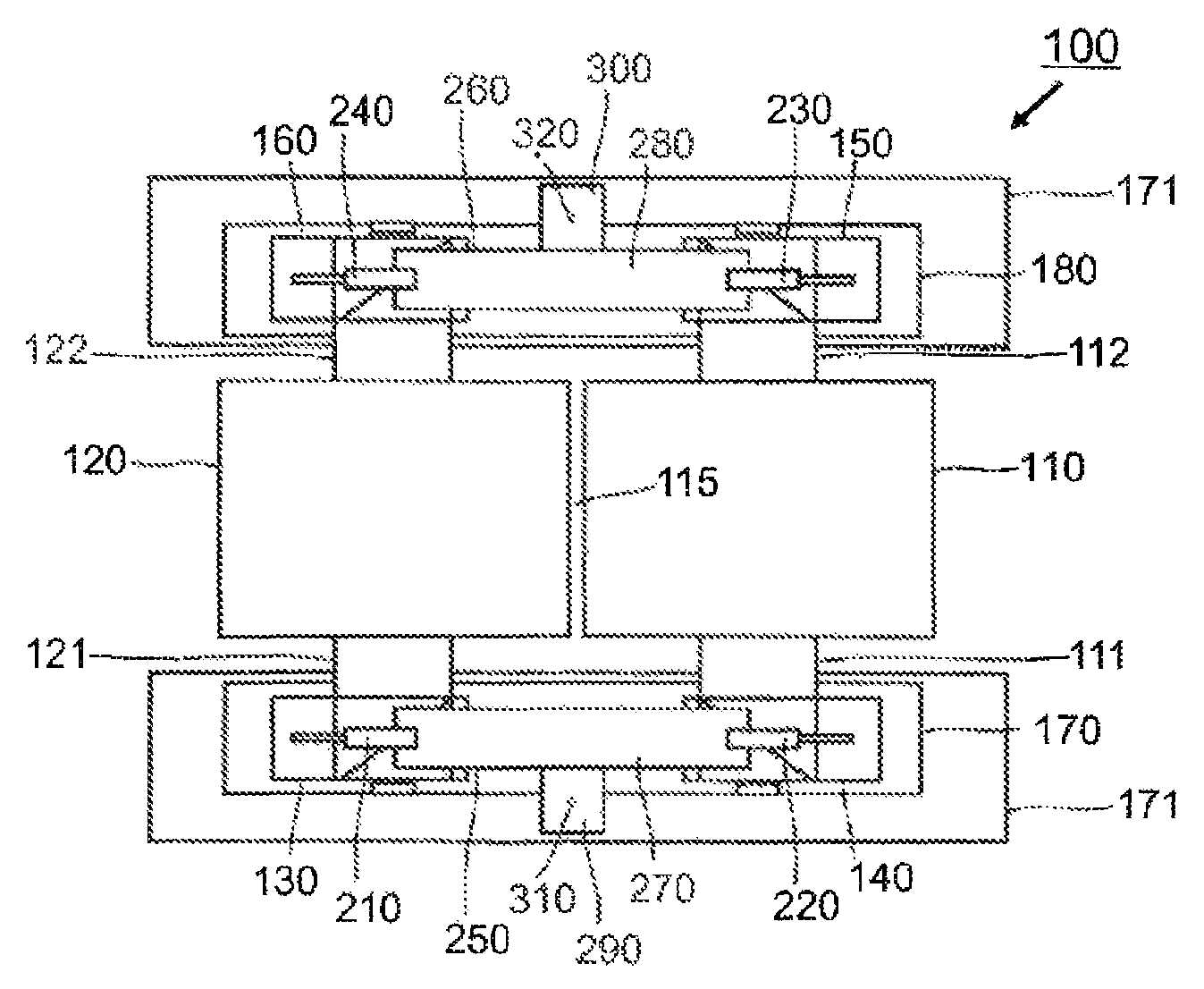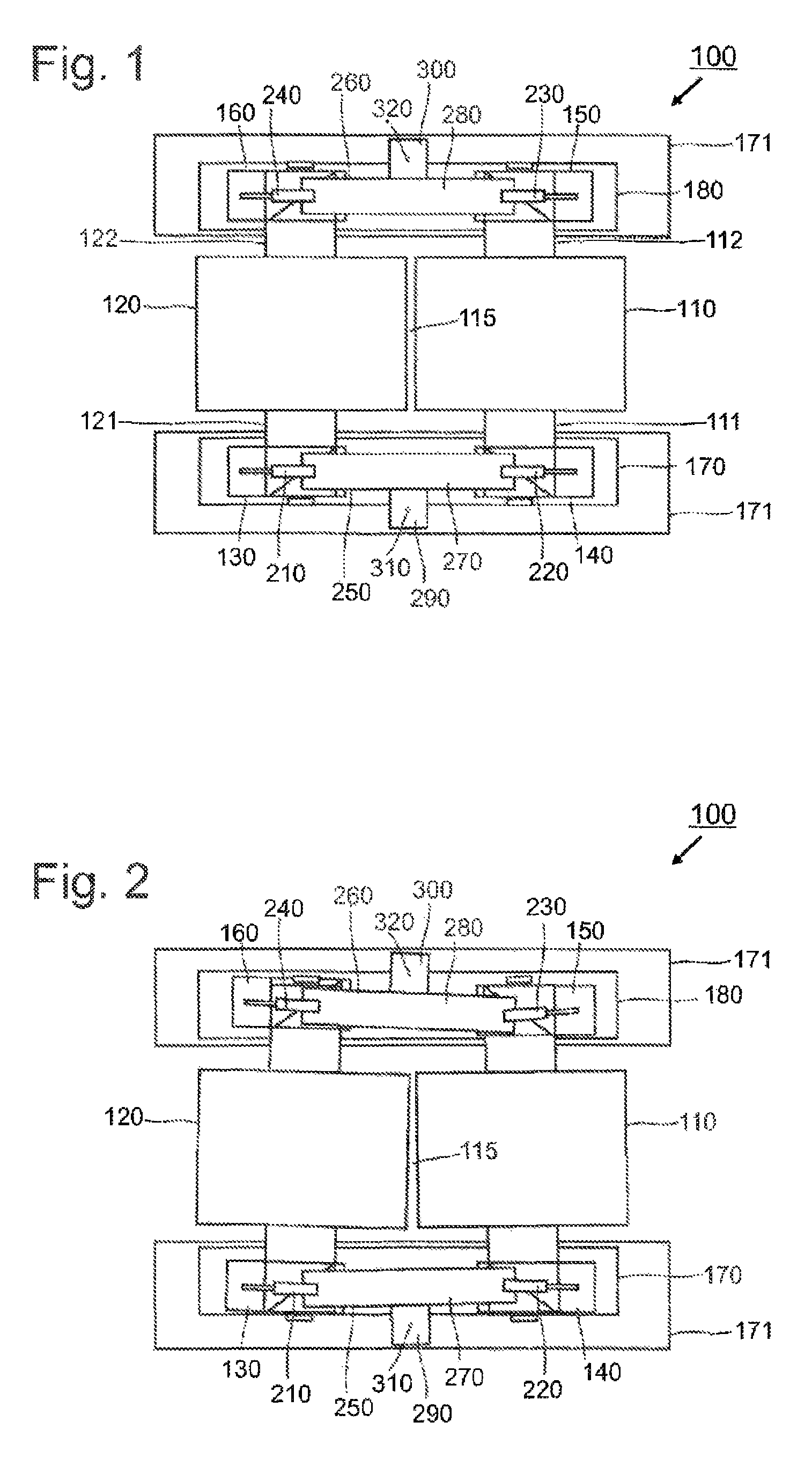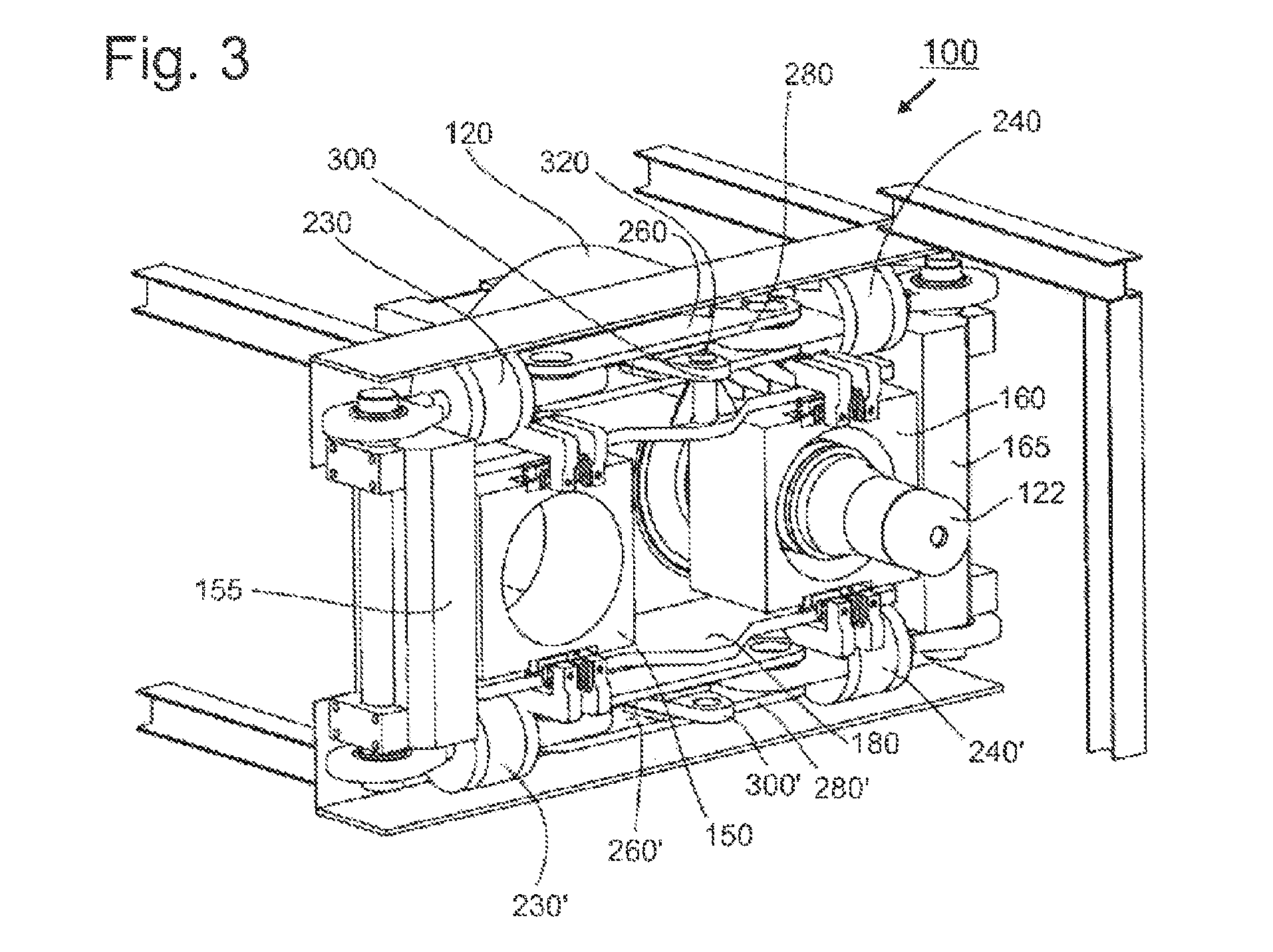Roller press having torque balance
a technology of torque balance and roller press, which is applied in the field of roller press, can solve the problems of complex logistic and possible handling of the machine frame, and achieve the effect of producing more easily and more cost-effectively
- Summary
- Abstract
- Description
- Claims
- Application Information
AI Technical Summary
Benefits of technology
Problems solved by technology
Method used
Image
Examples
Embodiment Construction
[0019]In FIG. 1, an inventive roller press 100 is depicted in a view from above (parts of a machine frame are blanked out for better representation of the individual parts). In this roller press 100, a first roll 110 is rotatably mounted in the roller press 100 with the aid of shafts -111 and 112. A second, adjacent roll 120, which for its part is rotatably mounted via shafts 121 and 122 in the roller press, is disposed in the roller press 100, with the formation of a roll gap 115 to be centered. During operation of the roller press 100, the two rolls 110 and 120 are driven in counter rotation, so that the grinding stock delivered from above to the roll gap 115 is drawn into the roll gap 115.
[0020]The mounting of the rolls 110 and 120 in the roller press 100 is realized via fixed bearings disposed in the fixed bearing housings 130 and 140 and via loose bearings disposed in the loose bearing housings 150 and 160, which in the roller press 100 lie opposite the fixed bearing housings 1...
PUM
 Login to View More
Login to View More Abstract
Description
Claims
Application Information
 Login to View More
Login to View More - R&D
- Intellectual Property
- Life Sciences
- Materials
- Tech Scout
- Unparalleled Data Quality
- Higher Quality Content
- 60% Fewer Hallucinations
Browse by: Latest US Patents, China's latest patents, Technical Efficacy Thesaurus, Application Domain, Technology Topic, Popular Technical Reports.
© 2025 PatSnap. All rights reserved.Legal|Privacy policy|Modern Slavery Act Transparency Statement|Sitemap|About US| Contact US: help@patsnap.com



